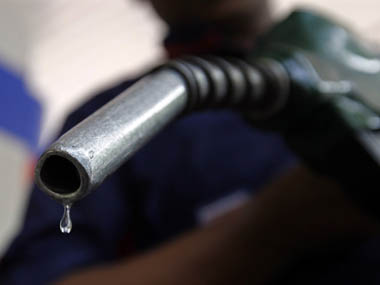Minister of state for finance Jayant Sinha has said that as long as oil prices stay within the $40-60 range, the government’s fiscal math and inflation calculations will not be affected, according to a PTI report Sure. But what happens when prices do go up beyond $60 per barrel and keep moving up? How will the government manage the demands that it should do something, anything, to soften the blow on the middle class? Indeed, the Narendra Modi government will now face a tricky political economic challenge it has been saved from till now. [caption id=“attachment_2547850” align=“alignleft” width=“380”]  Reuters[/caption] The government certainly was lucky to have oil prices starting to trend downwards about three months after it came to power. It did something smart – though highly unpopular - in increasing the excise duty on petrol and diesel, thus denying consumers the full benefit of falling prices. Between November 2015 and March 2016, the excise duty was hiked five times. But it left excise duty untouched when global prices started going up, and people started crying foul. This (along with steps like the PAHAL scheme and the giveitup campaign for cooking gas) did help bring down the overall petroleum subsidy outgo, helping the government manage the fiscal deficit. The petroleum subsidy bill came down from Rs 60,270 crore in 2014-15 to Rs 30,000 crore in 2015-16. Unfortunately, the government shied away from taking tougher decisions. It should have worked out a way to exclude all well-off sections from the benefits of subsidised cooking gas and taken steps to curb diversion of subsidised kerosene. But in the case of LPG, it never moved beyond voluntary opt-outs. The move to deny subsidised LPG to those whose income is above Rs 10 lakhs – which was supposed to have come into effect from January – was the latest. It is based on people filling up a form declaring their income and giving it to their LPG dealer. Are people, who had anyway not given up their LPG subsidy, responding to Modi’s clarion call by voluntarily declaring their income and getting knocked out off the subsidy regime? The fact that this has not worked well is evident from this news report which says that the petroleum ministry has asked the Central Board of Direct Taxes (CBDT) to share income tax returns with it, so that those earning above Rs 10 lakh can be weeded out. But what about those who could be earning more than Rs 10 lakh but do not file their returns – farmers who do not come under the income tax net, a host of people who are able to under-declare their income because of cash transactions? This writer has been arguing for a restoration of the cap on number of subsidised cylinders an individual gets. There is a cap of 12 but that is meaningless; it covers more than 90 percent of LPG consumers. The cap has to be lowered. Opt-outs will work only as long as prices are low; they will not when prices start rising. There already seems to be a roll-back on this – in April, petroleum minister Dharmendra Pradhan said that those who had given up their LPG subsidy could reclaim it after a year. Can Sinha be as sanguine about fiscal maths if people, seeing prices go up, start reclaiming their subsidy? The government needs to work seriously on finding a solution for the kerosene subsidy problem as well. Right now it is the cause of a lot of diversion of subsidised kerosene. A direct benefit transfer – whether in cash or kind – is a way out but it is not easy to implement, but some urgent action is needed on this front. At some point of time in the three years left for this government, if global oil prices continue to go up, it is going to come under pressure to reduce excise duty on petrol and diesel to bring down retail prices. But it should stave this demand off for as long as it can. Let us not forget that India imports 80 percent of its petroleum requirement. According to the PTI report, every one dollar per barrel increase in global prices will mean India having to shell out Rs 9,126 crore more every year on importing oil. This may not be sustainable in the long run and will push up both the fiscal deficit and the current account deficit. In the interest of macro-economic stability, the government needs to take tough measures to curb wasteful consumption of petroleum products and limit subsidies to the genuinely needy. The time for these tough measures is now, when prices are still relatively low and when there are no elections round the corner.
The government needs to work seriously on finding a solution for the kerosene subsidy problem as well
Advertisement
End of Article


)

)
)
)
)
)
)
)
)



